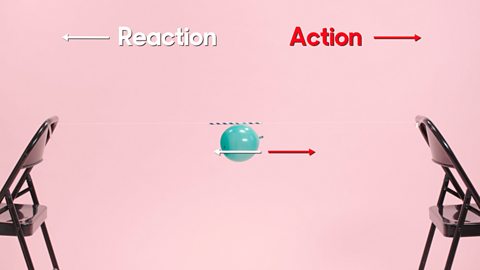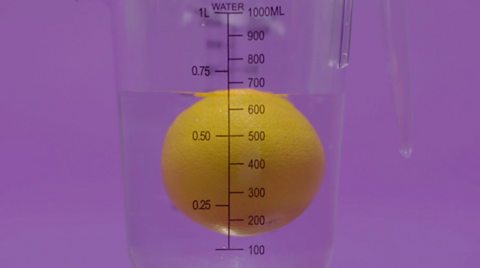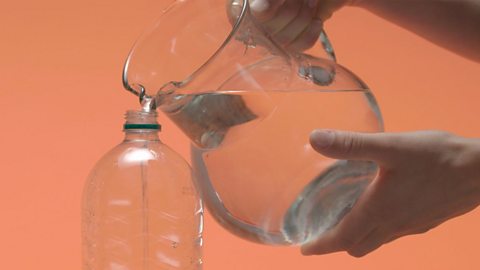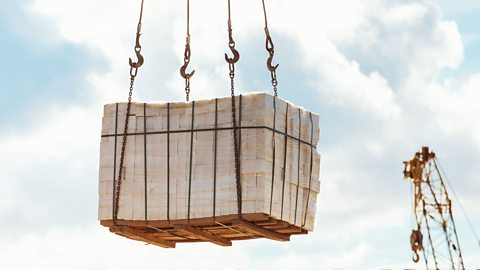Key points
A force is a push or pull that causes a change in speed, direction or shape.
Newton’s third law says that for every action there is an equal and opposite reaction.
This means that when one object pushes on another with a force, the other object pushes back on the first object with the same force.
Video: How to explain forces
Have a go

Image caption, WHAT YOU NEED: Some sticky tape, a long piece of thread, a balloon and a straw.

Image caption, STEP 1: Thread straw.

Image caption, STEP 2: Inflate balloon.

Image caption, STEP 3: Tape the straw to the balloon.

Image caption, STEP 4: Set balloon and let it go!
1 of 5
Forces
Newton’s third law says that for every action there is an equal and opposite reaction.
In the case of the balloon in the video, the action is the balloon pushing the air backwards; the reaction is the air pushing the balloon forwards. It is this force that makes the balloon move.

How does Newton's Third Law apply to us?
We cannot move independently. We require a force acting upon us from elsewhere.
When we want to move, our feet try to push the ground backwards. But it is the frictionA force which acts against the movement of an object. from the ground that pushes us forwards.
Who needs to know about forces?
Engineers designing transport need to consider forces. Something always needs to be pushed backwards if the vehicle is to move forwards.
An aeroplane’s thrustThe force which acts on a moving object to cause it to move. Thrust is often generated by an engine, for example in a car, rocket or aeroplane. depends on how much and how quickly its engines can push back the air. Boats need to consider how much and how quickly water can be forced backwards.
Quiz - Test your knowledge
GCSE exam dates 2025
Find out everything you need to know about the 2025 GCSE exams including dates, timetables and changes to exams to get your revision in shape.

More on Forces and movement
Find out more by working through a topic
- count15 of 16

- count16 of 16

- count1 of 16
